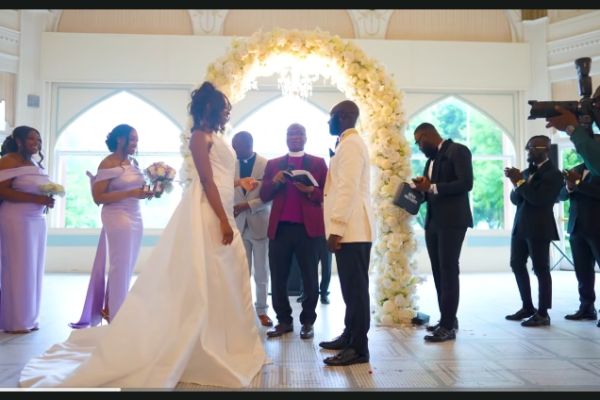Inside the Mind of a Cinematographer: 5 Cinematic Lighting Lessons You Can Start Using Today

Lighting Is Storytelling
Ever watched a film scene that felt emotional, eerie, or dreamy—without a single word being spoken?
That’s the power of cinematic lighting. A skilled cinematographer doesn’t just light a scene—they shape the story. Whether you're filming a wedding, corporate event, music video, or content for social media, lighting is what sets ordinary visuals apart from unforgettable ones.
In this post, we’ll dive into five lighting techniques used by professional cinematographers—lessons you can apply right now, even with minimal gear.
Lesson 1: Use Motivated Lighting to Make Scenes Believable
What it means: Motivated lighting is when your artificial light mimics a natural source in the scene—like a window, lamp, or candle.
Why it matters: It makes your visuals feel grounded in reality while giving you creative control over shadows, highlights, and emotion.
Quick Tips:
-
Place your key light where a light source would naturally be (e.g., beside a window).
-
Use softboxes or diffusers to simulate soft daylight.
-
Hide small LEDs or practical bulbs to boost ambient glow.
Pro tip: At Exclusive Visuals, motivated lighting is a technique we use in nearly every event or cinematic shoot—especially for weddings and music videos, where naturalism is key.
Lesson 2: Control Contrast & Shadows to Create Depth
What it means: Cinematic lighting is about playing with contrast—the relationship between light and dark. Shadows aren’t mistakes; they’re tools.
Why it matters: Contrast helps guide the viewer’s eye, builds depth in the frame, and adds emotion to your scene.
Quick Tips:
-
Use negative fill (like a black cloth) to deepen shadows.
-
Place your key light slightly to the side for natural contrast on the subject's face.
-
Block stray light with barn doors or flags to keep light focused.
If you’ve ever watched a scene that “feels expensive,” it probably had excellent shadow control. That’s what we bring to the table in every frame.
Lesson 3: Embrace Practical Lights in Your Frame
What it means: Practical lights are real light sources visible in the shot—think table lamps, fairy lights, street lamps.
Why it matters: They add realism and atmosphere while acting as natural motivation for your lighting setup.
Quick Tips:
-
Add lamps, Edison bulbs, or LED strips in your scenes for cozy warmth or modern vibes.
-
Use dimmers or smart bulbs to control intensity and color.
-
Blend practicals with soft ambient lighting to avoid harsh shadows.
Pro insight: We often design event lighting around the venue’s existing practical lights, enhancing them subtly for a cinematic touch.
Lesson 4: Use Color Temperature to Set Mood
What it means: Color temperature defines whether your light looks warm (orange/yellow) or cool (blue). It’s measured in Kelvins (K).
Why it matters: Warm light can evoke nostalgia, romance, or calm. Cool light feels clinical, futuristic, or intense.
Quick Tips:
-
Set your key light to 3200K for a warm look, or 5600K for daylight balance.
-
Use RGB lights or gels for more dramatic stylized color.
-
Combine cool and warm lighting for emotional contrast in the scene.
Whether you're filming a proposal or a high-energy music video, controlling color temperature lets you fine-tune the feeling of every shot.
Lesson 5: Master the Basics of Three-Point Lighting—Then Break the Rules
What it means: The classic three-point setup includes:
-
Key Light – main source
-
Fill Light – reduces shadows
-
Back Light – separates subject from background
Why it matters: This setup works for interviews, events, films—you name it. It’s the foundation of cinematic lighting.
Quick Tips:
-
Use a window as your key, a bounce board as fill, and a small LED behind the subject.
-
For dramatic mood, drop the fill light for stronger shadows.
-
Use a colored backlight for style and depth.
We build every lighting setup at Exclusive Visuals with intention—using these fundamentals but adjusting them to match your story.
Final Takeaway: Light With Intention
Cinematic lighting isn’t about expensive gear—it’s about visual storytelling. Every frame you shoot should say something, and lighting is your most powerful tool to shape that message.
If you're a creator, learning these principles will elevate your work. But if you want it done professionally—by people who live and breathe this stuff...
Want Your Next Project to Look Cinematic?
Let’s make it happen. Whether you’re planning an event, launching a brand campaign, or shooting a music video—we bring storytelling, style, and precision to every project.
Hire Us for Your Next Shoot
See Our Videography Packages
Bonus Resources:
-
Gear Guide: Best budget lights for cinematic videos
-
Tutorial: Aputure’s YouTube channel for lighting techniques
-
Book: “Painting with Light” by John Alton (classic must-read)
Thanks for reading!
Follow us on Instagram or Youtube for behind-the-scenes lighting setups, gear tips, and visual inspiration.
